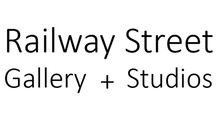It was Monday, we were in the first lockdown of 2021 and my art show, Dormant Colour, was due to open on Thursday.
The paintings were done, I’d spent a small fortune on Nordic Oak frames and art glass, and Fiona and I had painstakingly hung them on the walls. Now, all we could do was wait. It was ironic given the birds featured in the show had been in a lockdown of their own for years.
I remember the first time I saw them. The curator of all dead things at Auckland Museum, Matt, led me through a narrow corridor to a back room where specimens were kept in old floor-to-ceiling timber drawers. He’d emailed me an info sheet earlier and I’d ticked the Australian parrots I’d wanted to get a look at - Barnardius Barnardi pre-1978, Callocephalon Fimbriatum pre-1936. These birds were part of some great international museum swap that seemed particularly fervent in the 1930s. We'd kill some native birds and send them to Australia, they’d reciprocate. Carnage in the name of science. Matt opened one of the dusty drawers and the room filled with colour. The specimens were almost 100-years-old but looked as if they’d flown into the window just yesterday. Yellows and greens, bright reds and blues. Mesmerising torpedoes of colour.
I took photos, went home and proceeded to render them in a pastel frenzy. I erased a lot and made a mess. I was a mad scientist attempting to bring the birds back to life. Someone said the marks I made looked like the parrots had been scratching around on the paper - I took it as a compliment.
Now, it was doubtful they'd ever see the light of day. I waited with bated breath for Wednesday’s announcement. The lockdown lifted and the show went on. Opening night was a hoot (no pun intended), the show ran for a week and now we’re back into lockdown. Is there an argument for galleries being an essential service? Surely, loosing yourself in a pastel parrot can be as therapeutic as meditation or downing a bottle of red.


